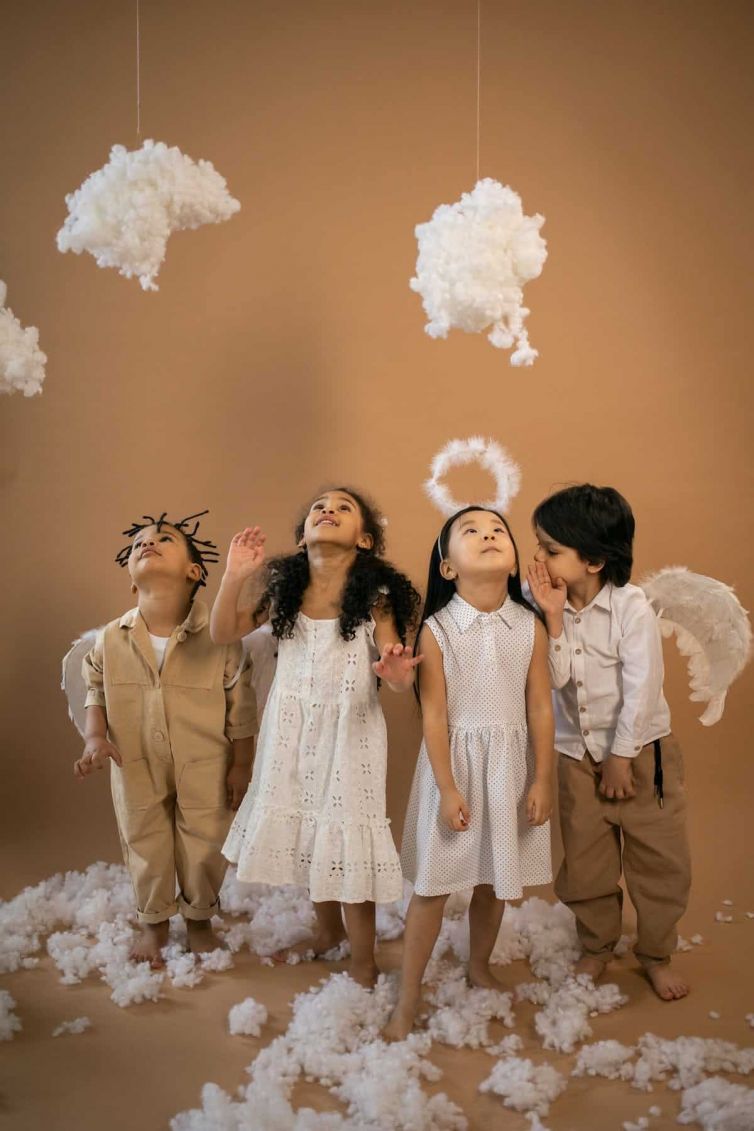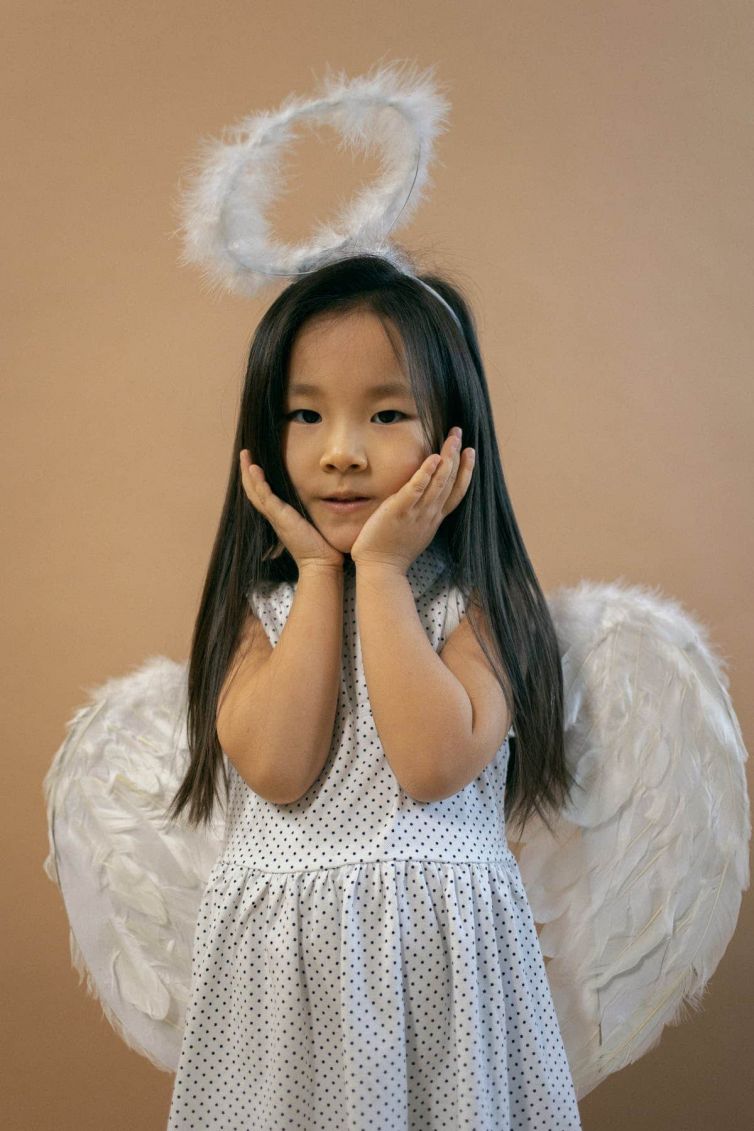How to prepare for a photo session with a child: a guide for parents and photographers

We will write about:
- Planning and organization: Before a photo session, it is worth considering what effects we want to achieve and what props we will need. It is good to prepare various sets of clothing and accessories, as well as choose the appropriate place and time of day for photography.
- Communication with the child: During the session, it is worth establishing a connection with the child and helping them relax in front of the camera. It is important to come to the meeting with a good sense of humor and patience, and to know a few games and activities that will help generate the child’s interest.
- Choosing the right equipment: It is a good idea to choose a camera and lens that will allow us to achieve the desired photo quality. It is also important to remember about additional accessories such as a tripod, UV filter, or camera grip.
- Lighting: It is important to properly illuminate the place where we conduct the photo session. Depending on the time of day and weather conditions, we can use natural light or artificial lighting, such as studio lamps.
- Posing and framing: During the session, it is worth directing the child and proposing different poses and frames. It is also important to remember about proper framing, which means setting up the photo to draw attention to the most important elements of the frame.
-
Planning and organization
Planning and organization are key elements of every photo session, especially when it comes to photographing children. It’s important to know what we want to achieve in the photos, what our expectations are, and what to pay special attention to.Firstly, it’s important to establish the purpose of the session – whether we want to take a portrait of the child, a family photo, or capture the child in a natural environment. Depending on what effect we want to achieve, we can prepare appropriate props, such as a basket of flowers, stuffed animals, or colorful balloons.
Next, it’s worth considering the location where we want to conduct the photo session. If we want to use natural light, it’s worth choosing an appropriate outdoor location, such as a park or garden. If we want to use artificial lighting, a better solution may be to use a photography studio or a well-lit room.
Another important aspect is choosing the right clothing and accessories. It’s worth choosing clothes that are comfortable for the child, yet look good in photos. It’s also important to match the colors to the surroundings and the character and style of the session.
The last but equally important element is choosing the time of day for the photo session. When photographing outdoors, it’s worth choosing the time of day when the light is most favorable, such as early morning or late evening. When photographing indoors, it’s important to have appropriate lighting and avoid too strong sunlight, which can create unfavorable shadows and reflections on the child’s face. However, light is not the most important aspect in this matter. We should talk to the parents about the time when the child is least tired and when, according to them, the time will be most conducive to play in front of the camera.
It may turn out that the light, studio, and clothes are all ready, but our little model will have no desire to take photos, and believe me, there is no force that can make them do it 😉
Communication with the child is crucial during a photo session. Children are very spontaneous and have their own rhythm, so it is important for the photographer to establish a connection with the child and help them relax in front of the camera.
First and foremost, it’s important to approach the child with a good mood and patience. Children can easily sense the emotions of adults, so if we approach the session with negative emotions, the child may also react with reluctance to cooperate.
During the session, it’s also useful to know a few games and activities that will help generate the child’s interest and encourage them to be active. For example, you can ask the child to make a face on command, jump around, throw a ball, or dance. You can also show the child the toys or props that will be used during the session, so the child can become familiar with them and feel comfortable.
It’s also important to have the right approach to the child – it’s worth talking to them on equal terms, for example, asking about their favourite toy or what they want to do during the session. This way, the child will feel important and more willing to cooperate.
During the session, it’s also helpful to create a friendly atmosphere for the child, for example, by playing music, preparing snacks, or providing a place to rest when the child gets tired.
All of these elements will help establish a connection with the child and help them relax in front of the camera. As a result, the photos will look natural, and the child will have a good time during the photo session.
Choosing the right equipment is extremely important during a photo session with a child. Depending on the type of photos we want to take, it is worth choosing the appropriate camera and lens that will allow us to achieve the desired photo quality.
If we plan to take portrait photos, it is worth choosing a camera with a good sensor that will allow us to take high-quality photos even in low light conditions. The lens should have a focal length of around 50-85 mm to achieve the desired zoom and perspective.
If we want to take action photos, for example of a child running or jumping, it is worth choosing a camera with a high shutter speed and a lens with a short focal length, which will allow us to capture movement.
The choice of additional accessories is also an important element, such as a tripod, which will allow us to stabilize the camera and avoid blurry photos, or a UV filter, which will protect our lens from scratches and dirt. A camera grip can also come in handy, especially when taking photos in difficult terrain or in unusual positions.
It is also important to remember that photographic equipment should be tailored to the photographer’s individual needs and skills. If we are just starting our adventure with photography, it is better to choose a simpler camera model that will allow us to master the basic functions more easily. If, on the other hand, we are more experienced photographers, we can opt for a more advanced camera model and lenses.
In summary, choosing the right equipment is very important during a photo session with a child. It is worth choosing a camera and lens that will allow us to achieve the desired photo quality, as well as remembering about additional accessories, such as a tripod or UV filter. It is also important to adjust the equipment to our individual photographic needs and skills.
4. Lighting
Lighting is a key element during a photo session with a child. A well-lit location allows for high-quality photos and enhances the natural beauty of the child. Depending on the time of day, weather conditions, and type of photography desired, natural or artificial lighting can be used.
Natural light is the ideal solution for outdoor photography, especially on sunny days. The best time of day for photos is an hour before sunset when the light is soft and warm. It is best to avoid photographing in direct sunlight as it creates harsh shadows and makes it difficult to capture fine details.
Indoors, it is best to use artificial lighting, such as studio lamps. They allow for even and soft light that perfectly highlights the child’s face and features. It is important to adjust the brightness and color of the light so that it is not too bright or too dark.
The placement of the light source is also important. If natural light is used, it is best to position the child so that the light falls on their face and accentuates their features. With artificial lighting, it is important to place the lamp in the appropriate location to achieve even and natural light.
In summary, well-chosen and positioned lighting is crucial during a photo session with a child. Depending on the time of day, weather conditions, and type of photography desired, natural or artificial lighting can be used. It is also important to consider the placement of the light source as well as its brightness and color to achieve a natural and even effect.
5. Posing and framing
Posing and framing are also important elements during a photo session with a child. The proper positioning of the body, facial expressions, and gestures of the child can greatly affect the quality of the photo and capture its naturalness.
It is important to guide the child during the session, showing them which poses and settings are most favorable for achieving good photos. Encouraging the child to engage in natural movements and play can lead to capturing natural and spontaneous shots. This will make the photos look more dynamic and emotional.
Framing is also a crucial element when photographing with a child. Proper framing allows for a full shot of the child and emphasizes the most important elements. It is important to frame the photo in a way that focuses on the child’s face, expression, and emotions, as well as the surroundings and background.
Well-framed photos with a child should be full of life and joy, as well as convey the emotions and story we want to tell. Therefore, it is worth experimenting with different settings and perspectives to achieve unique and interesting shots.
In summary, posing and framing are very important elements during a photo session with a child. Guiding the child and suggesting different poses and frames allows for capturing natural and spontaneous shots that convey the emotions and joy of the moment spent during the session. Proper framing is also essential for emphasizing the most important elements and conveying the entire story of the photo.
If you’re a mom looking to capture some precious moments with your child through photography, there are a few things to keep in mind. Lighting is crucial – natural light is best for outdoor photos, while artificial light works well for indoor shots. Make sure the light is positioned well to highlight your child’s features. When it comes to posing, encourage natural movements and gestures from your child, and guide them towards the best poses. Finally, framing the shot is important – focus on your child’s face and emotions, and experiment with different angles and perspectives. With these tips, you’ll be able to capture some truly special moments with your child that you can treasure for a lifetime.








